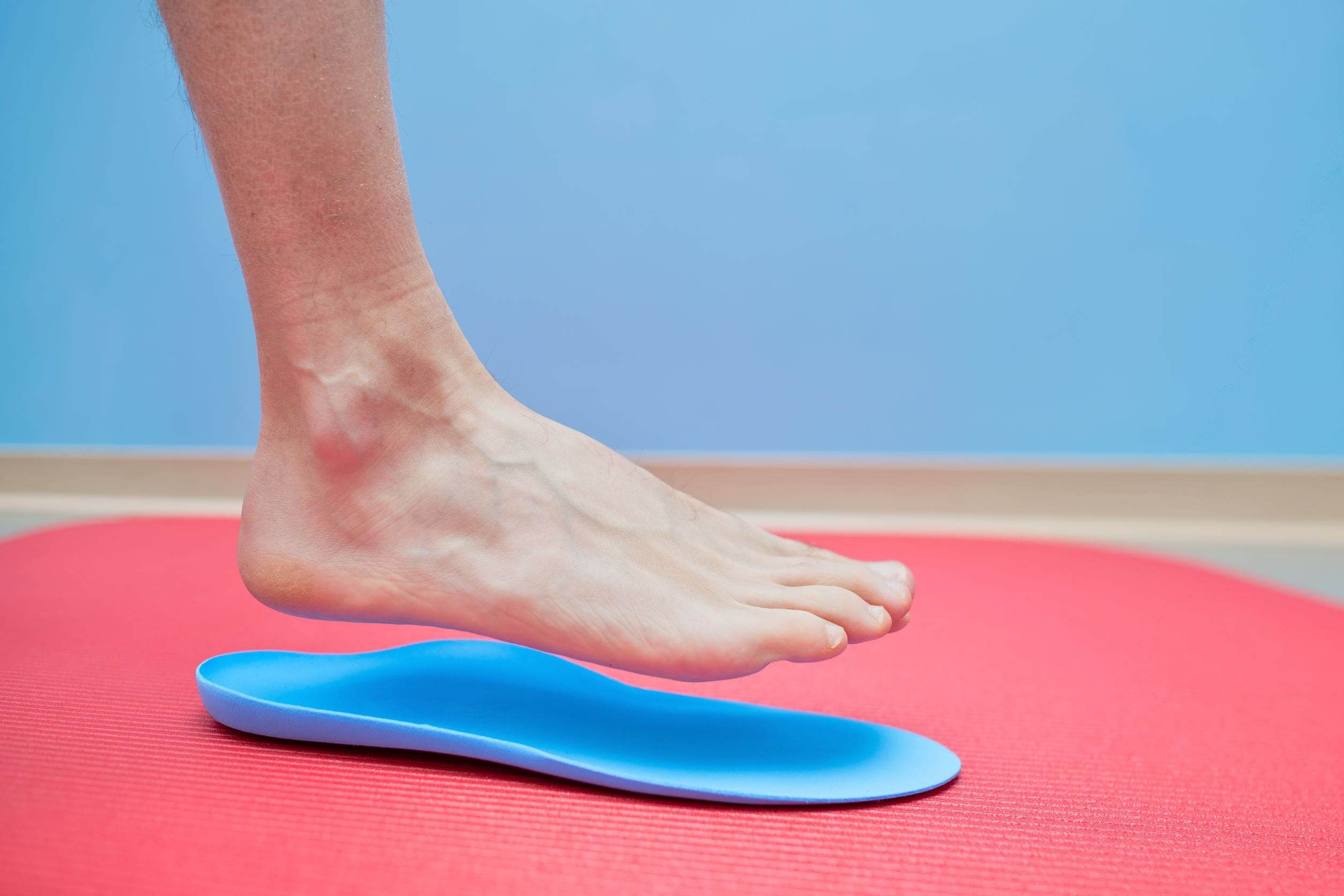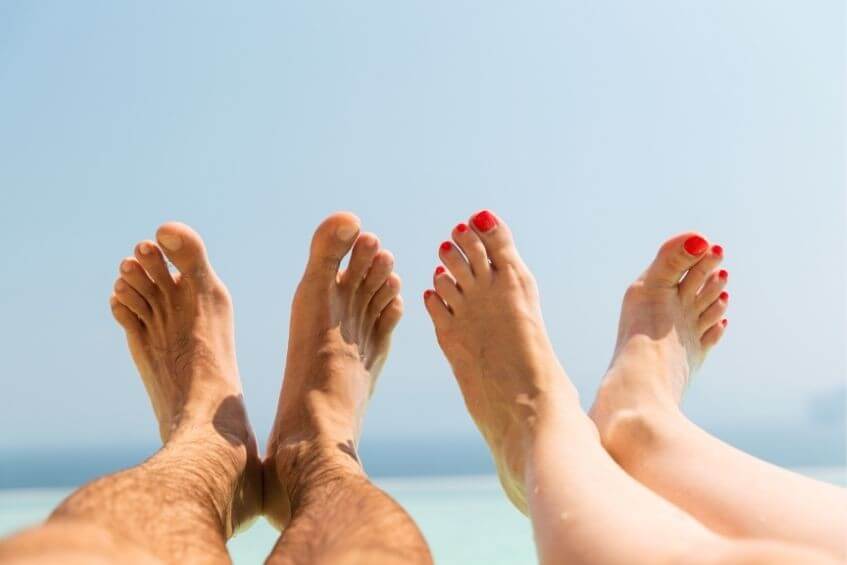
Jump to section
Warts are a growth on the skin that is caused by a viral infection from the Human Papilloma Virus (HPV). There are over 100 different strains of HPV, but only a few cause warts on your feet. The others are more likely to cause warts on other areas of your skin & body eg. hands, face or genitals. A wart that you find on the sole of your foot is officially called a verruca wart or plantar wart.
Although they're not related to pressure and can be found anywhere on the feet, you'll often find them on your heels or other weight-bearing areas.
Plantar warts are not usually a serious concern for your health, however due to their contagious nature and if they are causing you pain and discomfort, we recommend seeking advice and a treatment plan from our podiatrists in Brisbane.
HPV is a slow-growing virus that is transmitted by direct or indirect contact. This means you could get it directly from someone who has the virus (e.g. skin to skin contact), or by sharing floor surfaces, shoes or socks with someone infected. However, not everyone that comes in contact with the virus will develop warts, as each person's immune system responds differently to the viral strains.
The virus thrives in warm, moist environments, so is commonly picked up from communal areas such as public showers and pools, entering your body through a cut or a break in the skin.
This virus attacks the skin on the bottom of your feet, causing the top layer of skin to grow rapidly and form a fleshy raised lesion.
Anyone can get a plantar wart. Nonetheless there are a number of factors that can increase your risk of getting a foot wart, including;
Plantar warts can present at all shapes and sizes. As it is a viral infection, tiny blood vessels grow at the core of the wart. These tiny vessels supply it with blood and nutrients, and often appear as little dark spots in the centre of the wart. It is common to experience pain from a plantar wart, particularly if it is on weight-bearing area of your foot. The pressure that your body weight places on the wart is what makes it uncomfortable.
Some common symptoms you may experience if you have a plantar wart:

If you experience some or all of the symptoms above, you may be able to diagnose yourself with a simple test. It can be done using The Squeeze Test. This can help to identify whether you have a wart or a corn.
The Squeeze Test
Simply squeeze the area from either side — if this elicits pain, it is more likely a wart versus a corn.
To ensure you get an accurate diagnosis, we recommend seeing one of our podiatrists, as the treatment for a wart is very different to the treatment for a corn. Your podiatrist can usually tell if your skin growth is a wart just by looking at it, but if it is still not clear, a sample may be taken to be analysed and confirmed.

Generally, warts will go away on their own, but plantar warts often require active treatment and removal because they can be very painful based on their location on the sole of the foot. Some warts go away after a few treatments whereas long standing warts can take several months to be fully resolved.
Podiatrist’s can help in a number of ways, including:
SWIFT uses medical microwave technology that is highly effective in resolving warts and verrucae.
The machine allows us to deliver a focused microwave signal into the skin, ensuring only the wart is treated. It rapidly heats wart tissue
to 42-45ºC. This sudden increase in temperature can cause discomfort, however, as SWIFT treatments are very quick, discomfort only lasts a
few seconds. Once the appropriate dosage has been delivered, you can walk out without dressings and in no pain. For most people, the
warts will not require sharp debridement before using SWIFT.
This technology has between a 75-83% success rate, which is higher than any other treatment currently on the market.
Find out more about SWIFT Therapy.
There are two main topical chemicals used in clinics to treat your warts.
1. Silver Nitrate
2. Salicylic Acid
Depending on the size of the wart and how long the infection has been present, you may require several treatments. We recommend these chemicals are applied every 1-2 weeks until resolved. In some cases, we may encourage you to apply an over-the-counter treatment in addition to these chemical treatments throughout your treatment period.
Cryotherapy is the technique where a freezing agent (usually liquid nitrogen) is applied directly to the wart. It's a very quick treatment but the freezing sensation can cause discomfort and a blister may form after, which will resolve in the days following the treatment.
It may be tender to walk on following the procedure but in most cases you require less treatments using this method versus the chemical treatments.
This treatment is usually repeated 2-4 weeks apart until resolved.
Curettage is a surgical procedure where the area around the wart is numbed by a local anaesthetic. The podiatrist then removes the wart tissue to expose healthy skin. Phenol chemical is then used to burn the wart tissue and silver nitrate is used to stem the bleeding.
During the first few days post surgery, you will need to stay off the foot as much as possible, as it will be tender with weight bearing. Within 1-2 weeks most people are walking normally and pain is significantly reduced/resolved.
The success rate of this treatment is estimated between 65-85%.
There are many brands of over-the-counter products e.g. Wart Off or Wartner. These over the counter remedies usually contain either; a mild concentration of salicylic acid or are a home freezing kit. If we were to recommend an at home treatment, we would suggest trying the wart off stick. Apply for 4 weeks following the directions on the packet and if this does not resolve the issue, contact our podiatrists for an appointment.
Although you may know people who have had success with these remedies. It is important to remember that to successfully treat a wart, we need to stimulate an immune system response to combat the virus. These at home remedies have little to no evidence for success and can cause skin irritation and/or infection.
In 65% of cases, warts will clear up on their own and without medical intervention. However, if you ignore a severe plantar wart or a mosaic wart, the following could happen:
Here are a few tips to prevent warts from occurring in the first place:

If you are injured and experiencing heel pain, the first thing you should do is look at your activity levels and modify them if needed.
Follow these three simple rules to help manage your heel pain

Not everyone needs orthotics, but they can play an integral role in treating or relieving pain in several foot and lower limb conditions.

The heat and humidity of an Australian summer makes it a prime time for issues to arise, so our newest podiatrist Lucy has put together
seven helpful tips to keep your feet healthy and problem free throughout summer.
| Monday | 7:40am - 6:00pm |
| Tuesday | 7:40am - 6:00pm |
| Wednesday | 7:40am - 6:00pm |
| Thursday |
7:40am - 6:00pm |
| Friday | TEMP CLOSED |
| Saturday | CLOSED |
| Sunday | CLOSED |
Ground Floor, 344 Queen Street,
Brisbane City QLD 4000
| Monday | 7:40am - 6:00pm |
| Tuesday | 7:40am - 6:00pm |
| Wednesday | 7:40am - 6:00pm |
| Thursday |
7:40am - 6:30pm |
| Friday | 7:40am - 5:00pm |
| Saturday | 7:40am - 4:30pm |
| Sunday | CLOSED |
Newmarket Village, 114/400 Newmarket Rd, Newmarket QLD 4051